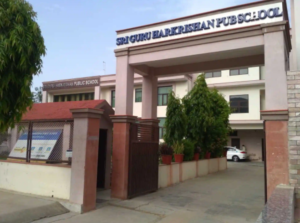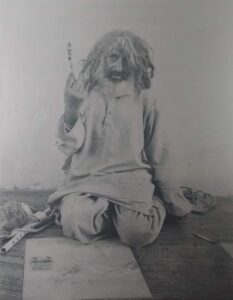Follow Me
KNOW CULTURAL RESOURCES OF HIMACHAL PRADESH AND KERALA
 Image Credits: https://www.amarujala.com/
Image Credits: https://www.amarujala.com/OLD HERITAGE LEADS TO IMMERSIVE TOURISM
“Ek Bharat Shreshth Bharat” scheme has paired seemingly contrasting states and cultures of Kerala in the extreme South and Himachal Pradesh cradled in Himalayas. Both have a divine connect with Kerala being “gods own country” and Himachal being the “abode of the Gods”, aptly embodying the ‘Unity in Diversity of Incredible India.’
Both States are tourist hubs; less urbanised; highest literacy; environmentally sensitive; governance models; organic lifestyles; social harmony and deep rooted culture. Indus valley (2250 to 1750 B.C) relics are found in Himachal foothills and numerous tribes shaped its prehistoric cultural ethos. Kulu district, renowned for international Dussehra festival, is the fabled Kulanthapita, “end of the habitable world”! Its capital Manali is named after Sanatan Hindu lawgiver Manu derived from ‘Manu-Alaya’ or “abode of Manu’. Kerala, home to coconut groves swaying in sea breezes comes from ‘Kera’ meaning coconut tree and ‘Alam’ embodying land tracing its non-prehistoric cultural genesis to the 3rdc AD historical Thamizhagom region influenced by the Chera, Chola, and Pandya Tamil culture and 2000 year old Sangam Literature.
Five distinct trails categorise Himachali culture with some features mirroring Kerala
EPIC RAMAYAN AND MAHABHARAT STORY TRAIL
It is evident in the 1553 AD Hidimba temple in Manali. Atop Jakhu, one of the seven Shimla hills, is the temple where Hanumanji rested while searching for sanjivni booti. The 8th c AD single rock cut marvel Masroor Temple in Kangra distt nicknamed “Ellora of the Hills” dates to pandavas. Kerala’s famous Kathakali dance or “story play”, derives themes from Indian Epics performed by male dancers donning elaborate masks and make up.
THE BRITISH RAJ TRAIL
Native to Shimla which remained the British summer capital since 1864 after Murree (Pakistan). The partition of India was signed in the magnificent Indian Institute of Advanced Studies (IIAS 1888) epitomizing Scottish architecture; Shimla Ridge has is the second oldest christ church(1846-57) in North India seen in the Amitabh film “Black”. The State library in mock Tudor architecture flanks it. Manor house of Rajkumari Amrit Kaur hosted Gandhiji often during his 1921-46 visits to Shimla. The gravestones of church St John In the Wilderness (1852) in Dharamsala all tell their own story! In Palayur, Kerala the ancient 52 AD St Thomas, Syro-Malabar Catholic church was established by St Thomas, one of the 12 apostles of Jesus Christ.
HOME TO THE DALAI LAMA

Since 1959 THE BUDDHIST TRAIL in HP runs across the cold deserts of Kinnaur and Lahaul Spiti tentatively listed on the UNESCO World Heritage sites. This imposing rugged landscape boasts of Tabo (996AD) monastery, Ajanta of the hills for preserving nine underground mandalas of paintings & stuccos. Kye (11th c AD) and Dhankar monasteries in formidable terrain are near staging points of the ancient trade Silk Route at Baralacha and Chhatru. Further south Rampur still trades local wares annually in the NovemberLavi Mela. Ritual Chham masked dance is performed by monks of Buddhist monasteries. This finds a strange parallel in the famed kathakali masked dance of Kerala.
Lari near Tabo monastery has 3500 years old Petroglyphs Spiti rock scattered over 19 sq km. Carvings depict swastika symbol and a bird now extinct. Nearby lie naturally preserved remains of a Buddhist monk called mummy of GIU buried in a 1938 landslide and discovered during road construction work. Strangely Buddhism and Jainism have co-existed and enriched Kerala culture too for nearly eight centuries.
THE TRIBAL TRAIL
Uncannily Kanam is a small place in Kottayam district of Kerala and is also a quaint monastery near Kaza in Himachal. Ancient millennial old Tibetan texts are preserved in Kaanam library. A Hungarian monk visiting Kanam monastery in mid 19th century made it his home. Since then Hungarian tourists to Himachal make a beeline to remote Kanam.
THE PAHAARI TRAIL
Culture changes at 10 kms as native Himachali dialects and lifestyles of baghati, hinduri, mahasuvi, kulluvi, trigarth, chhoti kashi, sirmauri resonate in the Culture department compilation of seven vanishing Pahari scriptswith beautiful Tankri, Chandrawani, Bhatakshri, Sharda, Brahmi, Pawuchi and Pangwani calligraphy. Pawuchi and Pangwani are secret scripts used since centuries to encrypt accounts and predict futures using Sancha or laal kitaab. Practitioners would roll indigenous twin owl bone crafted dominoes called paasas(used by Shakuni in Mahabharat) to locate fortune paragraphs akin to legendary Bhrigu Samita of Hoshiarpur. To revive quaint sancha as livelihood Culture department positioned Sancha readers strategically in 2019 Shimla International Literature Festival (SILF) earning them Rs 5000/- per day.




